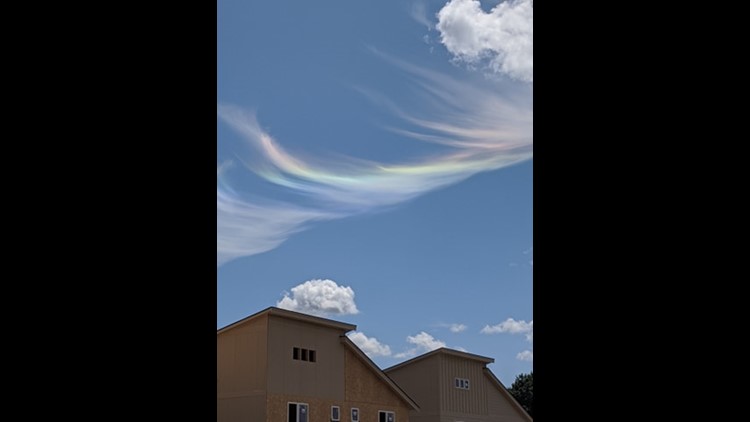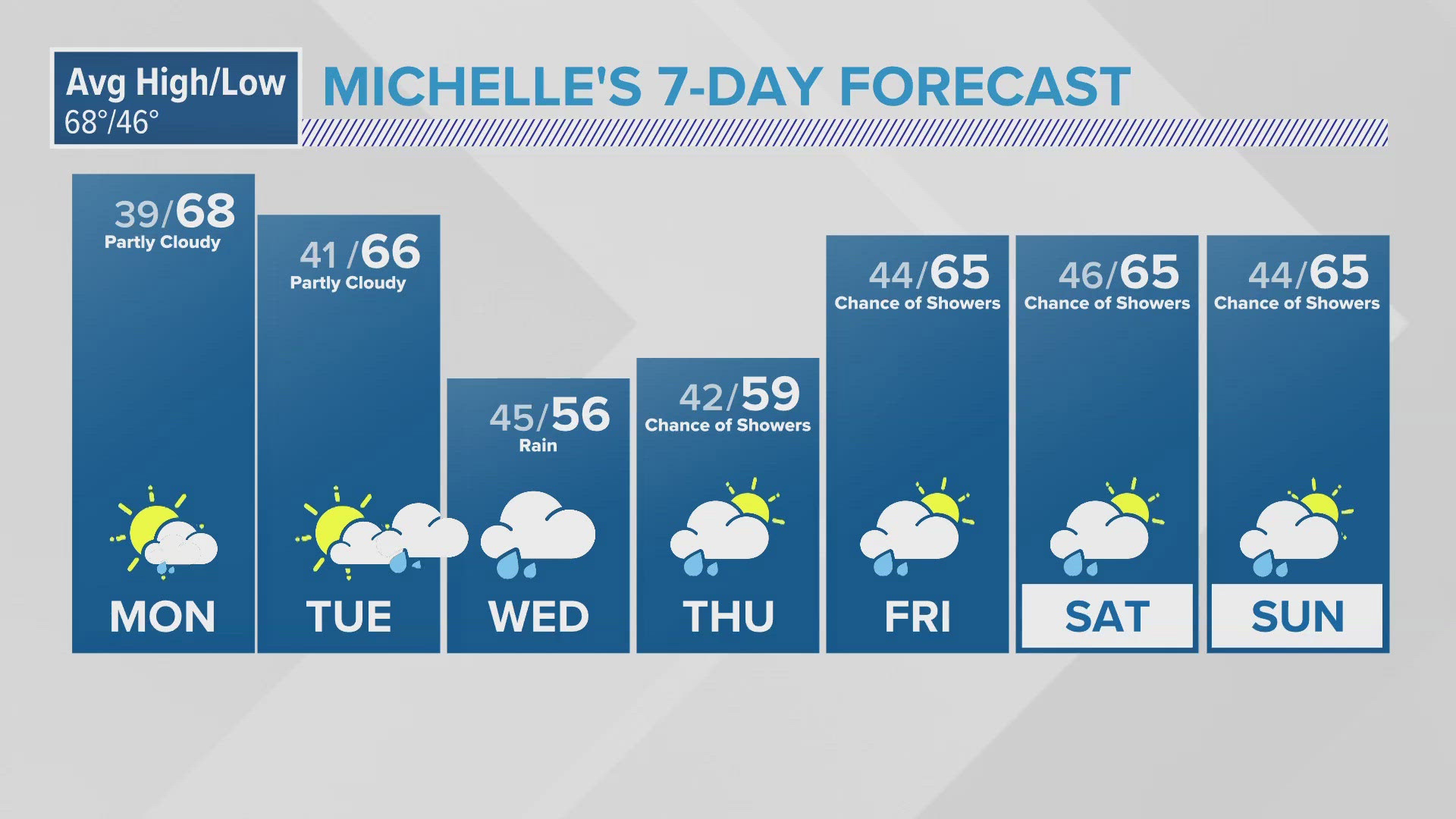SPOKANE, Wash. — Everyone loves rainbows, right? Well these rainbow clouds around Spokane have a few of us wondering how they form and what makes them different from the traditional rainbow.
It all has to do with refraction.
In a normal rainbow, the sun's light passes through falling raindrop. The raindrops act as a prism, which is the refraction needed to separate white light into the rainbow of colors. The rain is then optically projected in the opposite direction of the Sun into the rainbow we see.
So what about the "rainbow clouds?"
These clouds are scientifically known as "Circumhorizon Arcs" or "Iridescence Clouds." They're created the same way, with refraction. Except this time, instead of raindrops, the refraction takes place in the ice crystals that make up the cloud itself. The prism then separates the colors of the rainbow and we see it directly as if it were inside of the cloud.
The ideal conditions for this to happen is you need the right concentration of ice crystal in the upper atmosphere. Thin cirrus clouds work perfectly for this. There's enough ice crystals to create the vividness of the rainbow. But too much ice crystals will create a cloud that's too thick to allow the rainbow colors to shine through. Thus the cloud would just stay pure white.
There's also a precise angle the sun's light needs to hit the cloud at, which is why we don't see these all the time. That angle is exactly 46 degrees in any direction from the Sun's position.
The optics are similar to that of a "Sun halo" or "Moon halo" which can create a rainbow like feature around the Sun or Moon respectively. But the angle of the halo is 22 degrees as opposed to the 46 degrees needed for the circumhorizon arc rainbow feature.
If you happen to spot one of these clouds, take a picture! If you sent that to pics@krem.com, our meteorologist may just show it on TV.



